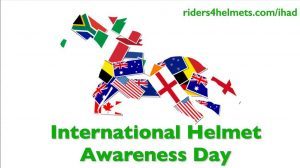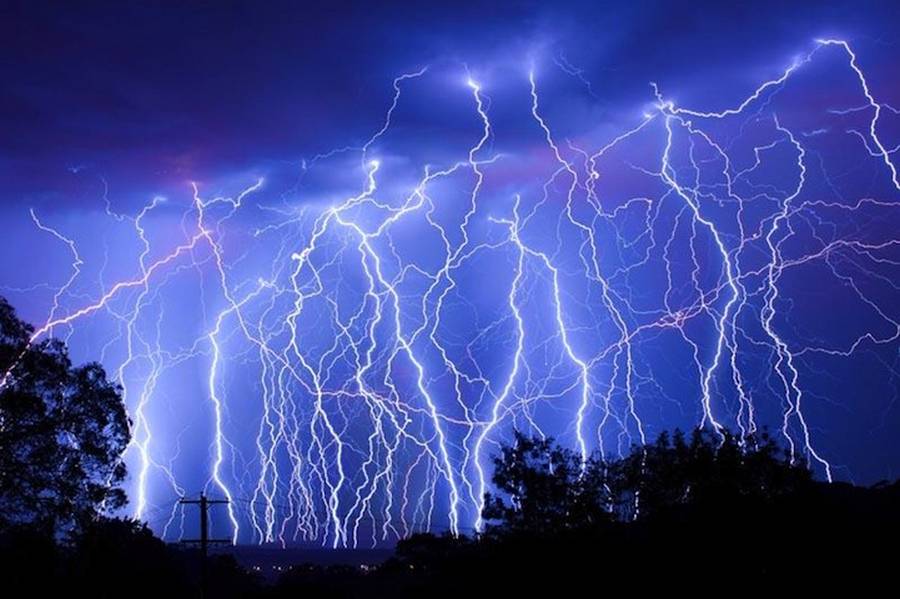 Fact: Wearing helmets can save lives. International Helmet Day is an initiative by the Riders4helmets campaign. As 17 September 2016 is the 7th International Helmet Awareness Day, we thought it a good time to revisit the initiative.
Fact: Wearing helmets can save lives. International Helmet Day is an initiative by the Riders4helmets campaign. As 17 September 2016 is the 7th International Helmet Awareness Day, we thought it a good time to revisit the initiative.
Riders4Helmets
The campaign Riders4Helmets was formed in the wake of a tragic accident suffered by US Olympic rider Courtney King-Dye. On 3 March 2010 King-Dye was completing a routine daily workout when her horse tripped and fell, throwing her from the saddle. King-Dye was not wearing a helmet at the time and sustained what the medical community calls a TBI (traumatic brain injury). She ended up in a coma for four weeks and six years down the road continues to undergo rehabilitation therapy.
Thanks to huge support group of family, friends and fans, the incident attracted huge attention in the riding community and inspired the creation of Riders4Helmets. The goal of the campaign is to educate equestrians – of all disciplines – about the benefits of wearing a certified, properly fitting and secured helmet.
Going Global
Riders4Helmets hosted and organised their first National Helmet Awareness Day on 10 July 2010. The initiative was endorsed by the US Equestrian Federation and Riders4Helmets had a stall at the Kentucky Horse Park, where supporters included Eclipse Award winning jockey Frankie Lovato Jr. More than 200 equestrian retailers and a number of helmet manufacturers came on board offering discounts on helmet purchases and in fact, it was such a success and attracted so much interest from all over the world that in 2011, Helmet Awareness Day went global.
Why It’s Important
Statistics reflect that horse riders have a similar rate of serious head injury as motor cycle riders. There are lots of interesting and complicated equations for the speeds and forces that come into play when one takes a fall, but the severity of head injuries is determined by a combination of your height off the ground as well as your forward speed. A fall from a height of 3 feet or higher is all it takes to suffer a serious brain injury (and just out of interest, one is approx. 13ft from the ground if you’re on a horse).
Head injuries occur not only while physically riding a horse, but can also happen while on the ground as a result of being kicked in the head, while grooming or cleaning a stall, during farrier or veterinary activities, or simply while spectating. It is estimated though that 75-80% of head injuries occur while physically mounted on a horse.
Wearing a helmet can reduce your chances of sustaining serious injury. One of the most important pieces of safety equipment athletes in any impact sport can own is a properly fitting helmet in order to absorb the impact to the head, provide cushioning to the skull and reduce jarring of the brain against the skull. It should be noted that helmets must be correctly fitted to be of benefit.
Over 100 deaths per year are estimated to result from equestrian related activities, with 10-20 times as many head injuries occurring for each fatality. As many deaths can be attributed to incorrectly diagnosed concussion, Riders4Helmets has chosen to highlight information on concussion for this year’s event.
Concussion
Concussions are defined as “injury to the brain caused by a hard blow or violent shaking within the skull, causing a sudden and temporary impairment of brain function, such as a short loss of consciousness or disturbance of vision and equilibrium. If a concussion is severe enough it can cause shearing injuries to nerve fibres and neurons.
Concussions can be difficult to diagnose as they cannot be captured on any medical imaging and do not show up on CT scans or MRIs. Symptoms are purely a clinical diagnosis and therefore it is important to know what to look out for.
Signs and symptoms of a concussion are:
Appearing dazed or confused
Headache
Nausea or vomiting
Balance problems or dizziness
Feeling groggy or sluggish
While helmets cannot prevent a concussion, they are designed to limit the forces experienced in most equestrian falls.
Support
In 2015, International Helmet Awareness Day received support from 16 helmet manufacturers and equestrian retailers in sixteen countries and they are looking to expand again in 2016.
For this year’s campaign, retailers in Australia, Canada, England, Ireland, New Zealand, Scotland, South Africa and the USA have already registered to participate and helmet brands that have committed involvement in International Helmet Awareness Day 2016 are: Antares-Sellier Canada, Antarès Sellier de France (USA), Champion, Charles Owen, Gatehouse, GPA, Harry Hall Hats, International Riding Helmets (IRH), Jin Stirrups, Kask America, LAS helmets (Leslie Sutcliffe), One K USA, One K (UK), Ovation, Samshield, Tipperary, Troxel and Uvex.
Popular South African tack retailer Western Shoppe is proud to participate in this year’s event and is offering 12.5% off all helmets at all its branches on Saturday, 17 September. Too busy to visit your local branch? You can take advantage online using coupon “3A13A15C”
Important Helmet Information
1. If you have a hard impact blow while wearing your hat, immediately replace it with a new hat. There may be damage to the hat that is not visible to the naked eye.
2. Hat manufacturers generally recommend replacing your hat every four to five years. However, because hats take a beating over time from sweat, heat, dust and rain, and the Styrofoam in the hat relinquishes its ability to protect the head over time, replacing your hat sooner than four to five years may in some circumstance be necessary.
3. A ponytail or different hairstyle can affect the fit of your hat. When you try on hats prior to purchase, wear your hair in the style that you expect to wear it when riding.
4. If you purchase your hat online, check the date of manufacture. Purchasing a used hat can be very risky and is NOT recommended. The hat may have sustained previous damage that you aren’t able to see.
5. There is no statistical correlation between skill level and injury likelihood. Professional riders are just as at risk to sustain injury due to a fall as less frequent riders.
7. Head injuries are cumulative. An original head injury can be made much worse by additional concussions.
8. Riding is considered more dangerous than downhill skiing and motorcycling.
9. Approximately 20% of accidents which result in head injury happen while the person is on the ground.
10. It is best if you invest in your own hat regardless of whether or not you own a horse. An incorrectly fitting hat offers very little, to no protection. In addition to wearing a correctly fitting hat, you must have the harness correctly fastened on your hat. If the harness is not fitting snugly, the hat can rotate should you have a fall and it won’t be able to protect your head to its fullest intention.
For more information on Why Helmets Matter, see http://riders4helmets.com/why helmets matter.
For statistics and facts for the Equestrian Industry regarding helmets, see http://riders4helmets.com/equestrians.
For more information on the Riders4Helmets campaign, please visit:-
Website: www.riders4helmets.com
Facebook: www.facebook.com/riders4helmets
Twitter: http://twitter.com/riders4helmets
YouTube: www.youtube.com/user/riders4helmets








